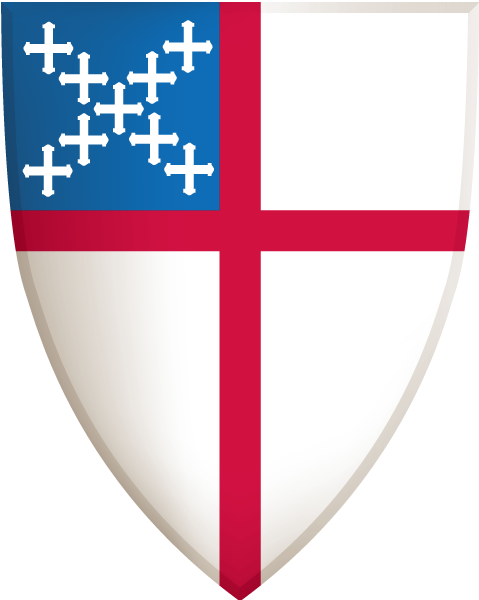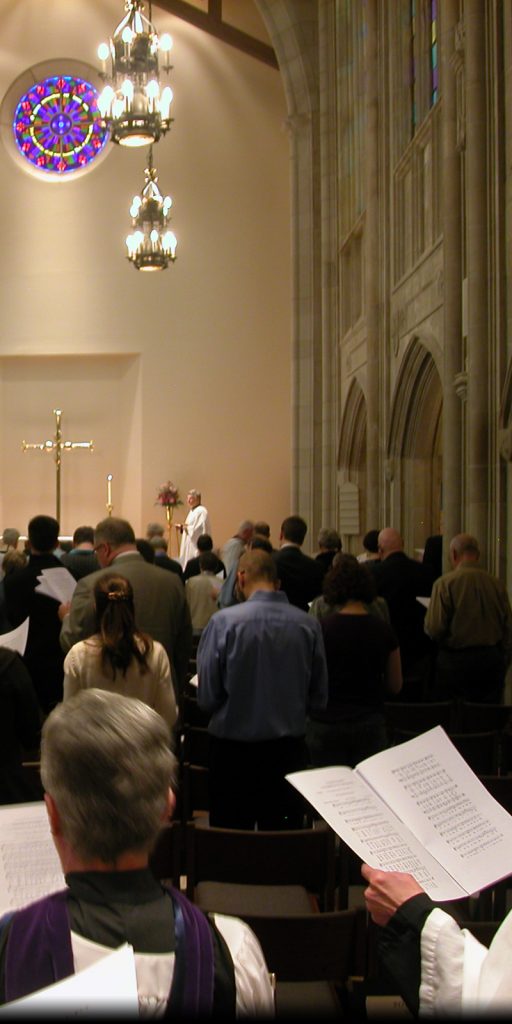One thing have I asked of the Lord, that I may dwell in the house of the Lord all the days of my life. Ps. 27:5
Followers of Jesus began meeting for worship after the resurrection. Space set apart for worship becomes essential. Over millennia, the Church has given names to various features of liturgical space.

Locations in the Chapel

The Sanctuary – Area of the church set apart for the altar and credence tables.

The Chancel – Area of the church set apart for the ambo, and seats for officiating and assisting ministers.
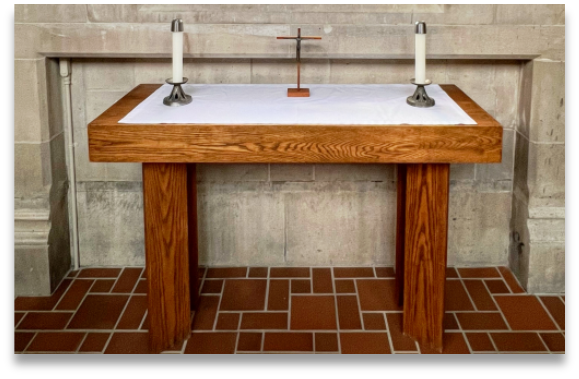
Side chapel – A smaller area of worship within a larger edifice for more intimate worship. The Chapel has two side chapels. One we call, “the side chapel. The other we call the “Mary Altar.”

The Mary Altar (or the Lady Chapel) – A side chapel dedicated to “Our Lady,” the Blessed Virgin Mary.

Nave – The place in the church building for the congregation. It is between the sanctuary and the narthex or entry of the church building. The term may be derived from the Latin word navis, “ship,” which was an early symbol of the church.


The Columbarium – A Columbarium is a consecrated area reserved for the placement of cremated remains of the departed. Interment is the placement of the ashes of the deceased in a sealed container which is placed in a specially designed niche as a permanent or semi-permanent resting place. The Chapel has two columbaria. Learn more about purchasing a niche.
Windows in the Chapel

Clerestory Windows – The clerestory of a church is the highest part of a church where windows are installed for light and ventilation. The word derives from Middle English “clere,” meaning “giving light,” and “story” meaning “floor of a building.”

Chancel Windows – Windows found in the Chancel area of the Chapel.

Lancet Windows – A lancet window is a tall, narrow window with a pointed arch at its top. It acquired the “lancet” name from its resemblance to a lance. The lancet windows in the Chapel are found in the side aisles.

The Great Lancet Window – The long lancet window at the liturgical west end of the Chapel (the physical east end of the Chapel on the compass) features limestone tracery, an architectural device by which windows (or screens, panels, and vaults) are divided into sections of various proportions by stone bars or ribs of molding.

Porch Windows – Windows in the porch area of the Chapel are the oldest in the Chapel of Saint John the Divine.
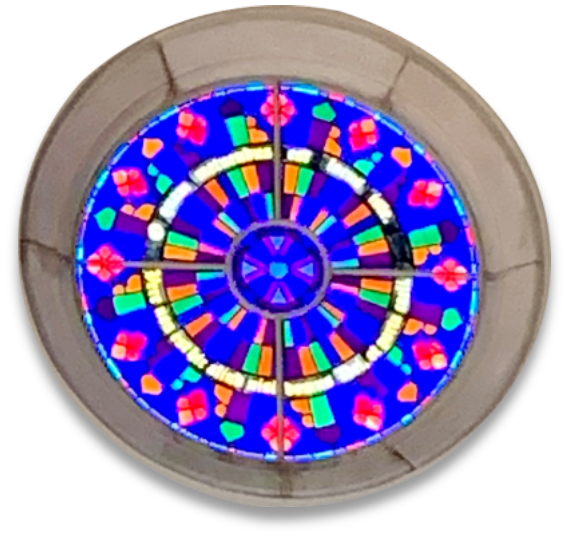
The Rose Window – A circular stained glass window with radiating tracery in the form of a rose. The rose window at the Chapel contain words in Latin from Genesis 28:17, words that immediate following Jacob’s dream of a ladder joining earth to heaven at Bethel – O quam metuendus est locus iste! Vere non est hic aliud nisi domus Dei et porta coeli. – O how awesome is this place! This is none other than the house of God, and this is the very gate of heaven.
Architectural elements in the CHapel
 Hammer beam roof trusses – The “Hammer-beam Roof” consists of hammer-beam, struts, collars and curved braces. The hammer-beam is merely the lengthening and thickening of the “sole-piece” at the foot of the trussed rafter, the principal rafter being strutted, and the weight of roof carried lower down the wall by means of a curved brace tenoned into the hammer-beam and wall-piece.
Hammer beam roof trusses – The “Hammer-beam Roof” consists of hammer-beam, struts, collars and curved braces. The hammer-beam is merely the lengthening and thickening of the “sole-piece” at the foot of the trussed rafter, the principal rafter being strutted, and the weight of roof carried lower down the wall by means of a curved brace tenoned into the hammer-beam and wall-piece.

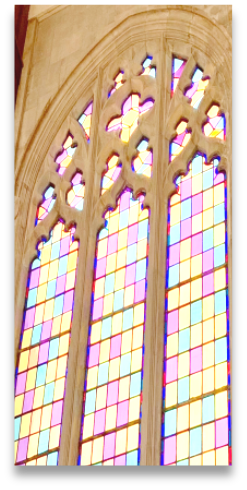
Limestone Tracery – Limestone tracery is an architectural device by which windows (or screens, panels, and vaults) are divided into sections of various proportions by stone bars or ribs of molding.

Proscenium Arch – The structure framing the opening between the Chancel and the Nave.

Tympanum over the entrance to the Nave – The tympanum over the entrance to the nave of the Chapel of Saint John the Divine features the name of the Chapel and the eagle – the symbol of the Apostle John.
